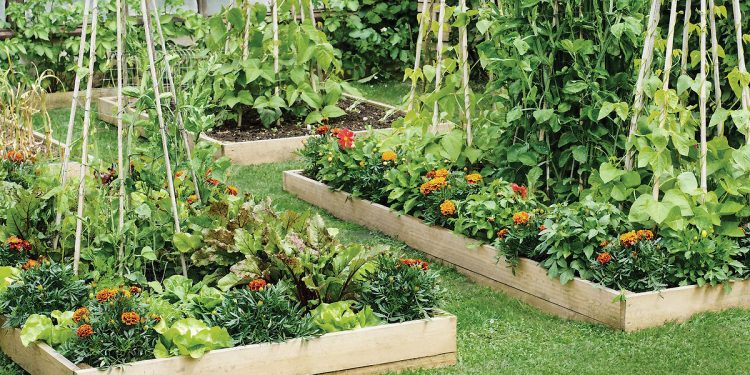Have you ever wanted to construct a raised garden bed at home but don’t know where to start? Maybe your soil is too rocky to grow your desired plants, or you like the idea of not having to lean down to do your gardening. Raised garden beds keep your plants separate and provide a unique look with clean lines of plants. APRD’s Urban Forestry Land Manager, Wendy Pappas, provides these instructions and tips for building your own raised garden bed at home to bring a new look and convenience to your garden!
Map It Out
Much like any major gardening project, the first step to building a raised garden bed is to map out your area and decide where to place the bed. You’ll need an even surface cleared of any plants, dirt piles, or debris. Dig out the area and get it as flat as you can by using a shovel and a level. Once the surface is flat, you can tap on the ground to make the dirt hard and compact.
Start Building
After creating a flat spot for your bed, you can start building the bed itself. There are many materials available that you can use for building the walls of your bed. Some affordable options are natural cedar or pressure-treated lumber, which you can simply arrange in a rectangle box shape and nail together. You can also use cinderblocks, which are very durable and can last for many years. Be sure the bed’s width does not exceed 4 feet so you’ll be able to reach all areas of the bed from each side.
Wendy constructed her own bed laying out the first layer of blocks and making sure they were level. For the second layer, she put re-bar in each block so they would stay together and put a bead of caulk to attach. She staggered the blocks so the seams wouldn’t match up, then filled the inner holes with sand.
Think Through The Process
Before your building process is complete, think about how you will fill the bed with soil. One smart option is to leave a gap in one side of the bed large enough for a wheelbarrow to fit through. This will make it much easier to fill the bed without having to dump soil over a finished wall. You’ll also want to think about which types of plants will go in your bed. “I got a dump truck delivery of nice garden soil,” says Wendy. “I wanted to grow vegetables, so I had a special veggie soil mix delivered. I recommend knowing what you want to grow and having soil delivered that has lots of organic matter and other nutrients added.”
Irrigation
Make a plan for how you’ll provide water for your raised bed. Soaker hoses and timers are great options, especially if you can’t see yourself going outside everyday to water by hand. “I designed my own little watering system,” explains Wendy. “I found a timer that would water the beds for me. I got a splitter on the timer and attached 4 hoses to that. I then ran solid hoses from my water faucet on the back of the house under the existing flowerbed and along the ground to each of the raised beds. I then got some soaker hoses and ran them around the raised bed after all the soil was in place. Next, I attached it all to the timer and now my garden beds water themselves.”
After all soil is in place and irrigation is set up, the final step is to plant to your heart’s desire!
















